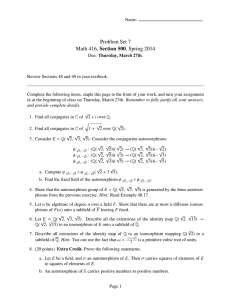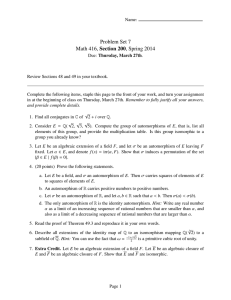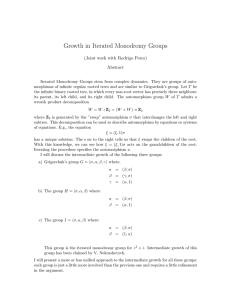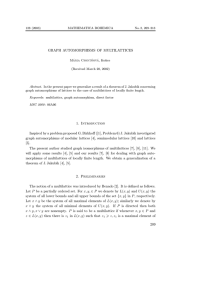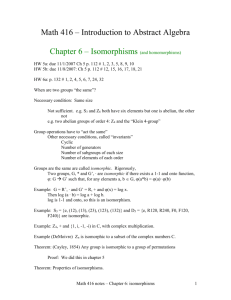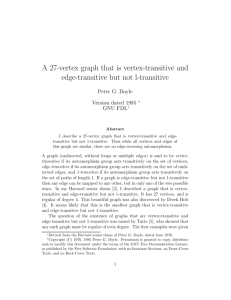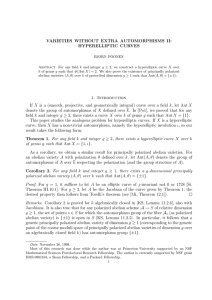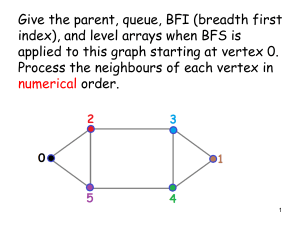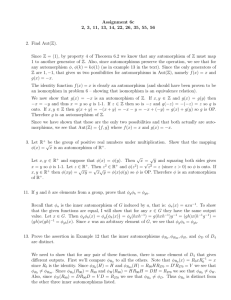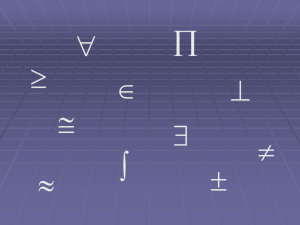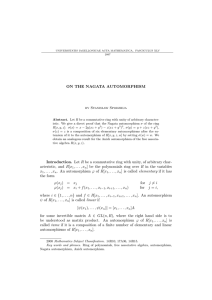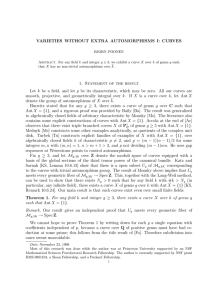modulo generates
advertisement
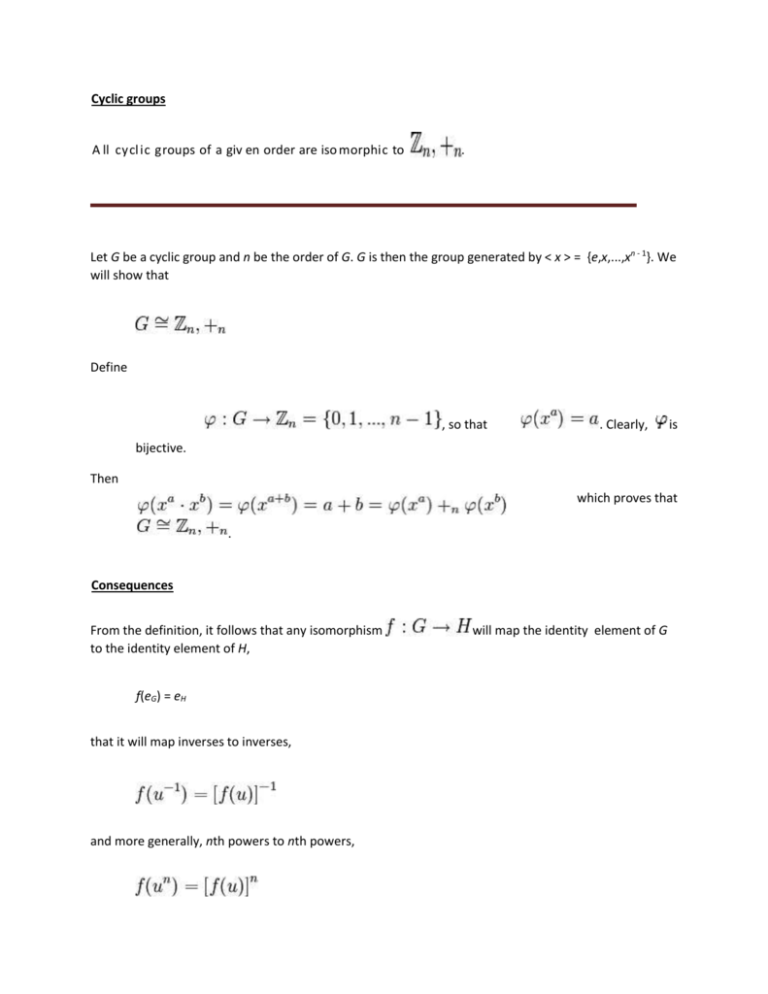
Cyclic groups
A ll c y cl i c g roups of a giv en order are iso m orphi c to
.
Let G be a cyclic group and n be the order of G. G is then the group generated by < x > = {e,x,...,xn - 1}. We
will show that
Define
, so that
. Clearly,
is
bijective.
Then
which proves that
.
Consequences
From the definition, it follows that any isomorphism
to the identity element of H,
f(eG) = eH
that it will map inverses to inverses,
and more generally, nth powers to nth powers,
will map the identity element of G
for all u in G, and that the inverse map is
also a group isomorphism.
The relation "being isomorphic" satisfies all the axioms of an equivalence relation. If f is an isomorphism
between two groups G and H, then everything that is true about G that is only related to the group
structure can be translated via f into a true ditto statement about H, and vice versa.
Automorphisms
An isomorphism from a group (G,*) to itself is called an automorphism of this group.
Thus it is a bijection
such that
f(u) * f(v) = f(u * v).
An automorphism always maps the identity to itself. The image under an automorphism of a conjugacy
class is always a conjugacy class (the same or another). The image of an element has the same order as
that element.
The composition of two automorphisms is again an automorphism, and with this operation the set of all
automorphisms of a group G, denoted by Aut(G), forms itself a group, the automorphism group of G.
For all Abelian groups there is at least the automorphism that replaces the group elements by their
inverses. However, in groups where all elements are equal to their inverse this is the trivial
automorphism, e.g. in the Klein four-group. For that group all permutations of the three non-identity
elements are automorphisms, so the automorphism group is isomorphic to S3 and Dih3.
In Zp for a prime number p, one non-identity element can be replaced by any other, with corresponding
changes in the other elements. The automorphism group is isomorphic to Zp - 1. For example, for n = 7,
multiplying all elements of Z7 by 3, modulo 7, is an automorphism of order 6 in the automorphism
group, because 36 = 1 ( modulo 7 ), while lower powers do not give 1. Thus this automorphism
generates Z6. There is one more automorphism with this property: multiplying all elements of Z7 by 5,
modulo 7. Therefore, these two correspond to the elements 1 and 5 of Z6, in that order or conversely.
The automorphism group of Z6 is isomorphic to Z2, because only each of the two elements 1 and 5
generate Z6, so apart from the identity we can only interchange these.
The automorphism group of Z2 × Z2 × Z2 = Dih2 × Z2 has order 168, as can be found as follows. All 7 nonidentity elements play the same role, so we can choose which plays the role of (1,0,0). Any of the
remaining 6 can be chosen to play the role of (0,1,0). This determines which corresponds to (1,1,0). For
(0,0,1) we can choose from 4, which determines the rest. Thus we have 7 × 6 × 4 = 168 automorphisms.
They correspond to those of the Fano plane, of which the 7 points correspond to the 7 non-identity
elements.
The lines connecting three points correspond to the group operation: a, b, and c on one line means
a+b=c, a+c=b, and b+c=a. See also general linear group over finite fields.
For Abelian groups all automorphisms except the trivial one are called outer automorphisms.
Non-Abelian groups have a non-trivial inner automorphism group, and possibly also outer
automorphisms.
